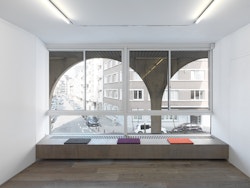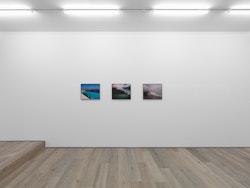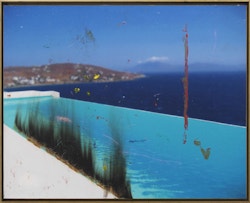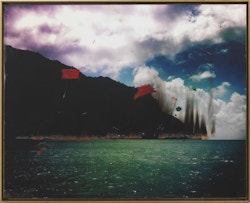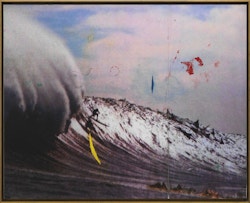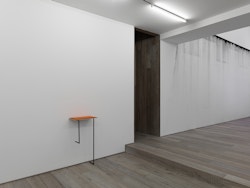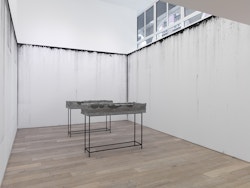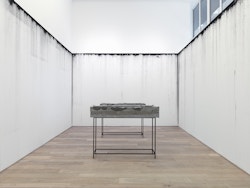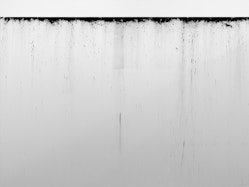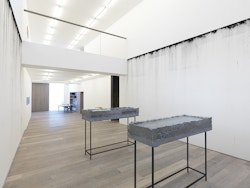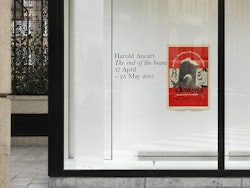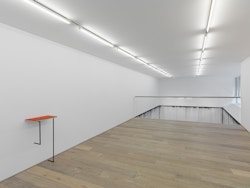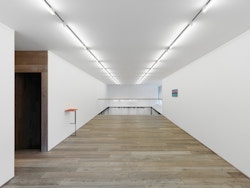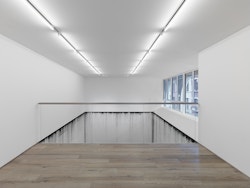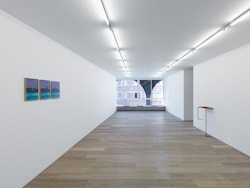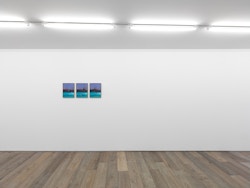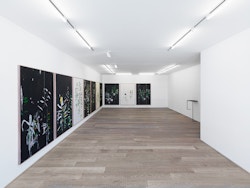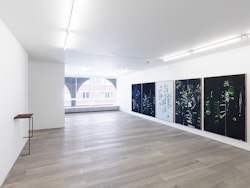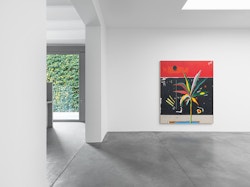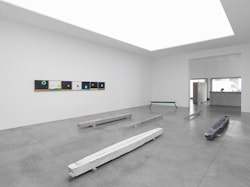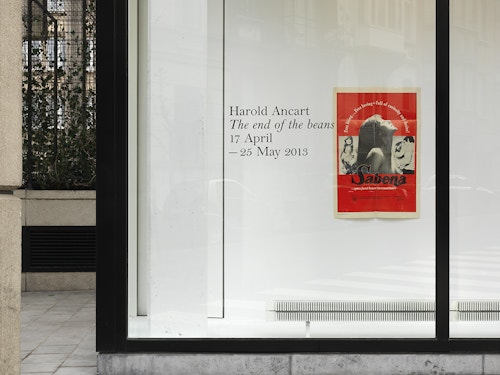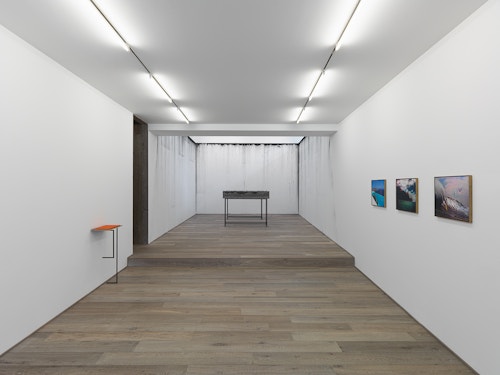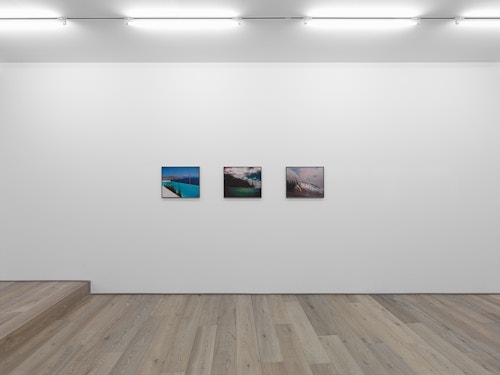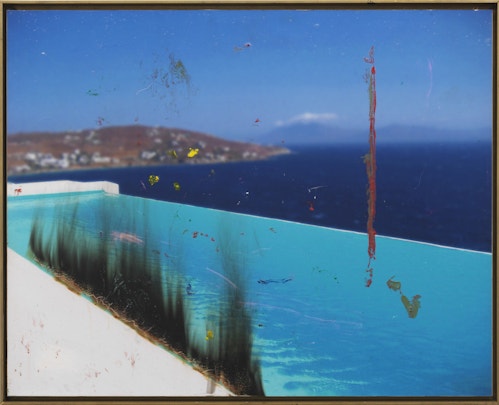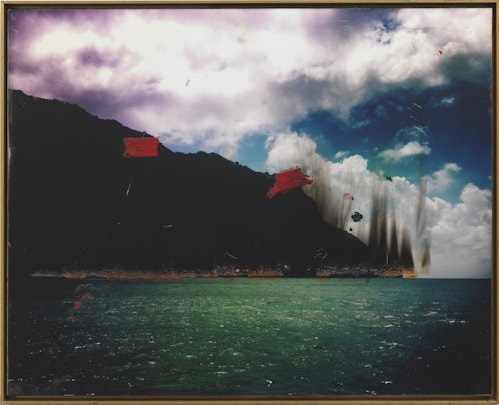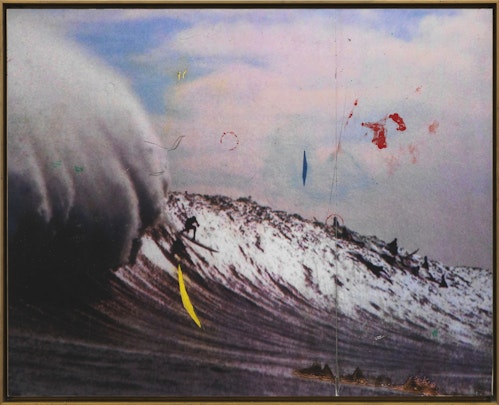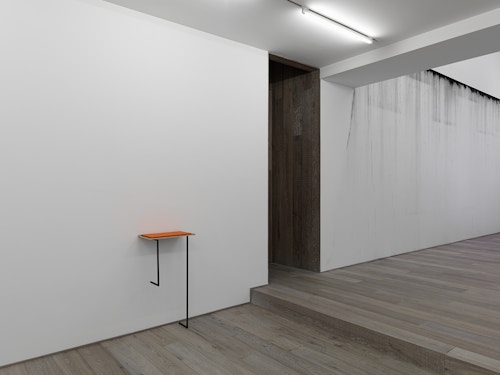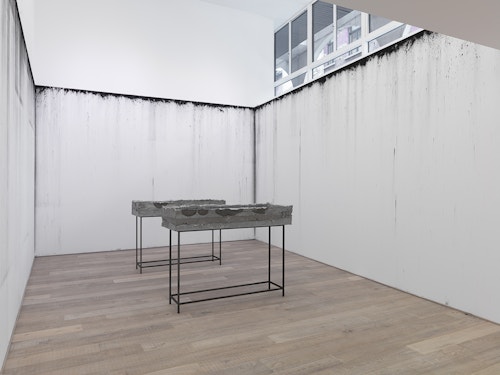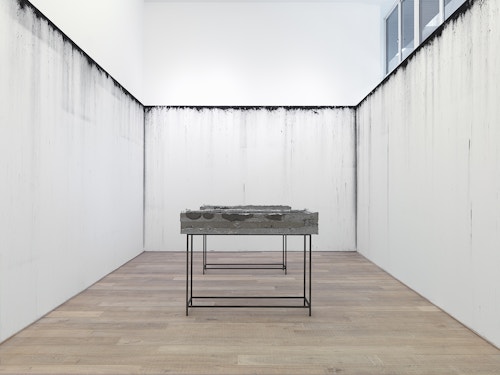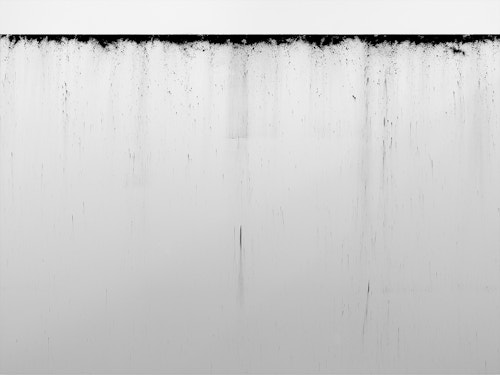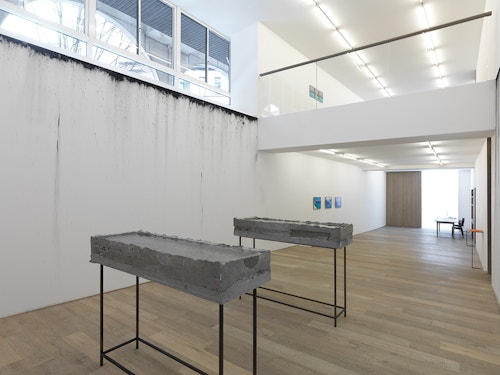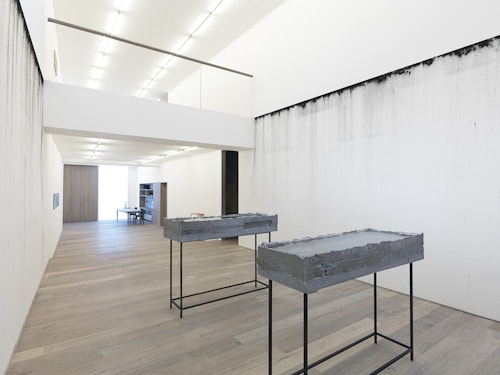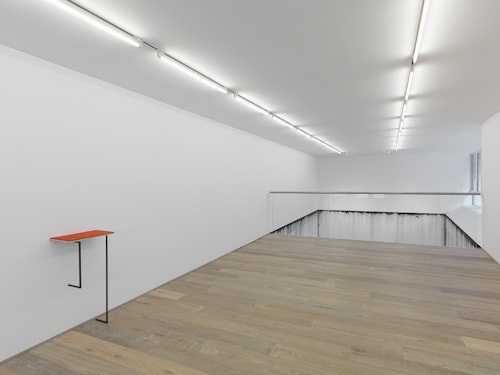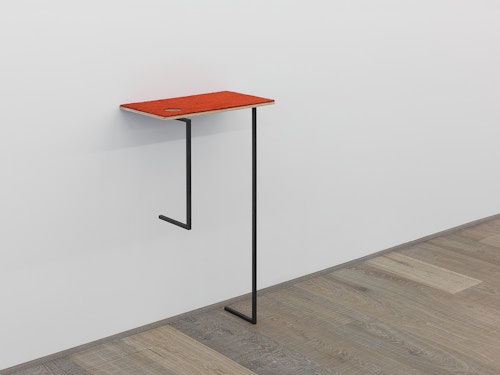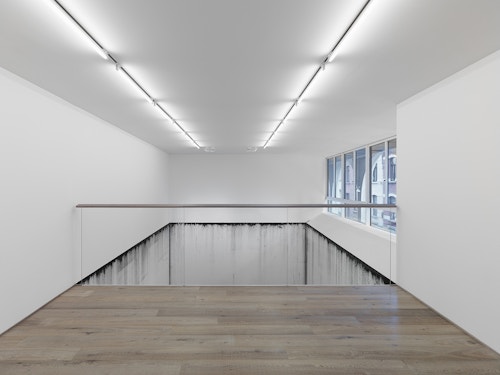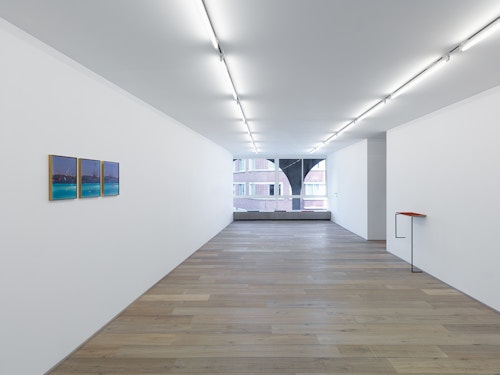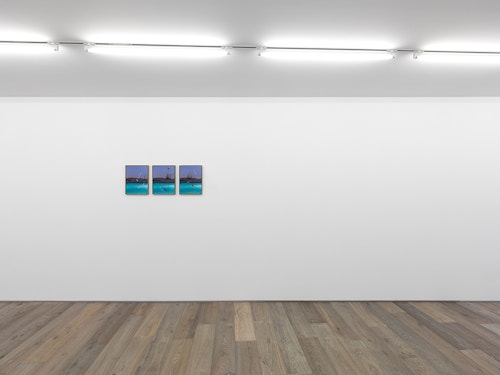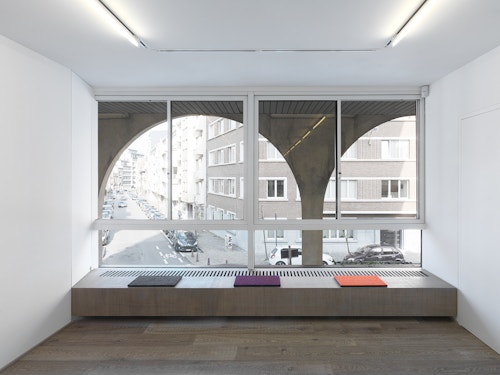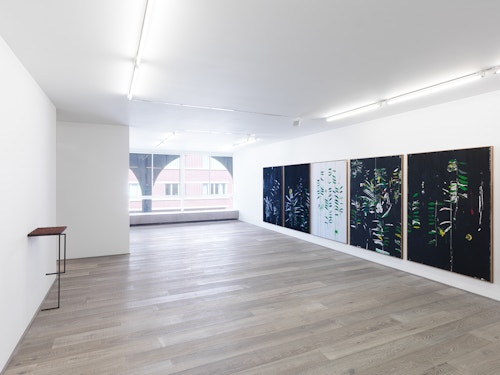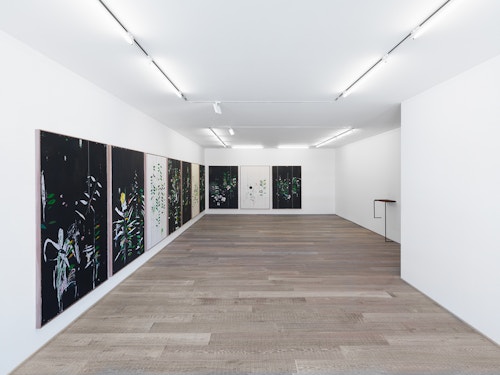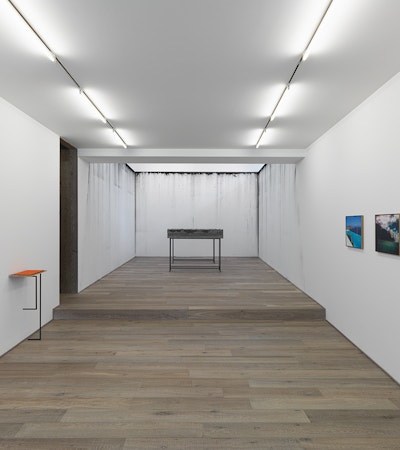
Harold Ancart The end of the beans
“The end is where we start from.”
– T.S. Eliot
The opening exhibition in Xavier Hufkens’ new gallery space looks like a travel agency: the venue is filled with a plethora of images featuring pools, tropical forests and horizons. The promise of wonderful faraway climes seems to lie here.
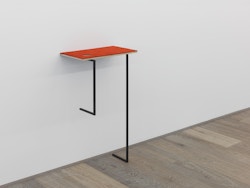
As the son of a former flight attendant and the brother of an airplane pilot, the young Belgian artist Harold Ancart (who lives in New York) is used to long distance flights. The universe he portrays in his first solo exhibition at the gallery, however, is not that of a jet-lagged modern man, flying above the clouds to new ‘meetings’. On the contrary – his work is drenched in lasciviousness, exoticism and nostalgia, as announced by the vintage ‘Sabena’ erotic film poster at the entrance of the exhibition that entices passers-by.
Despite their digital origin, the snapshots of outdoor pools found on the Internet seem to have been yellowed by time, like old holiday pictures that have stayed out too long in the sun. Ancart reclaims those images by highlighting them with traces of fire. The blackness the artist injects into the paradisiacal landscapes is one of the recurring elements in his work. It can be found in the line of the horizon made of pure pigment sprinkled on the wall, as well as in the large drawings of plants presented on the first floor. The lush vegetation in those is shown as a negative on a coat of black paint. The pre-cut vegetal shapes Ancart uses as templates throughout the series remind of the plant drawings of Matisse, whose technique of drawing in the colour, instead of with it, is also adopted by the artist.
As the heir of his drawing practice, the line is another formal element present throughout Ancart’s work. That stroke of the pen that the artist initially used to structure his compositions has progressively moved from the sheet of paper to other media: it appears in his spatial installations with tightened wires, and also in his spindly metallic sculptures. The surface of the concrete containers filled with water also present longitudinal incisions. They indicate the material origin of the casing used to pour concrete and are built from floor slats that usually adorn terraces. Moulded in reverse, the draining ridges no longer evacuate water but, on the contrary, retain it. The massive and repeated geometrical volumes are, simultaneously, flower holders, drinking troughs and sarcophagi that resolutely adopt the language of Minimalist sculpture.
Repetition, described by the artist as ‘stuttering’, is actually omnipresent in the exhibition; the images found online are printed in several copies, templates multiply the same vegetal pattern, sculptures adopt identical shapes… But each piece is still individual. The analogy with the speech defect, which causes sufferers to involuntarily repeat part of a word without managing to form a perfect sentence, is revealing. Whether he burns, scratches or disperses to achieve what is often more trace than form, Ancart’s method is similar to controlled skidding. His motto seems to be turning the fall, the fire or the blackout – in one word, the end – into a moment of epiphany.
Harold Ancart (b. 1980, Brussels) lives and works in Brooklyn, New York. He has recently exhibited at the M building in Miami (2012), the abbey of Brauweiler in Germany (2012) and the Emily Harvey Foundation in New York (2010). His work has been exhibited in group exhibitions at Wiels in Brussels (2012) and Witte de With in Rotterdam (2011). He will participate in the exhibition Champs Elysées at the Palais de Tokyo in Paris (2013).
Devrim Bayar
